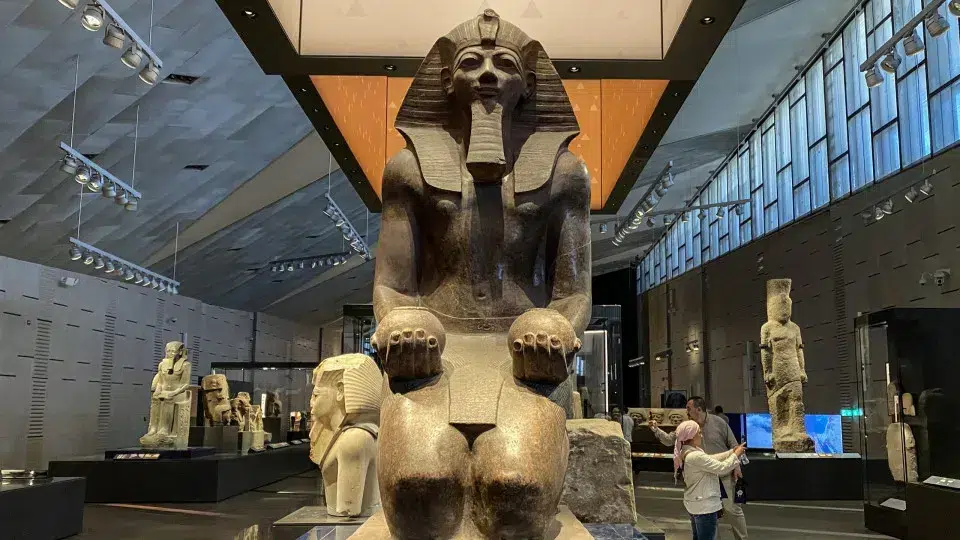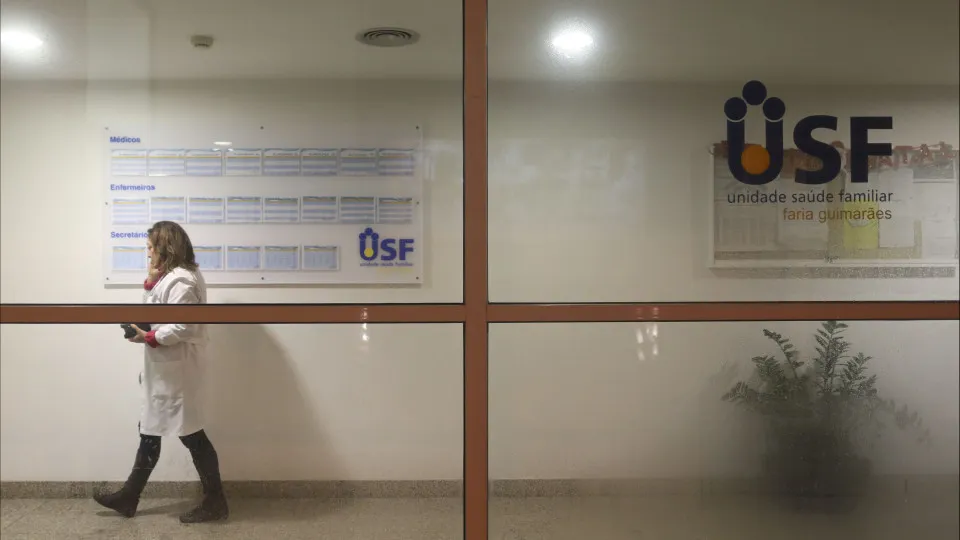
Located on the outskirts of Cairo, near the Pyramids of Giza, the Grand Egyptian Museum (GEM) comes with a price tag of $1.2 billion (around €1 billion). It is recognized as the world’s largest museum dedicated to a single civilization, displaying over 50,000 pieces out of a collection of 100,000. These artifacts span 7,000 years, including the monumental statue of Ramses II and 5,398 artifacts from the treasure of Tutankhamun, among them his iconic gold mask, as officially noted by the institution.
The inauguration will gather approximately 80 official delegations with an expected attendance of 55 heads of state and government, including the President of Portugal, Marcelo Rebelo de Sousa, and Brazilian Culture Minister Margareth Menezes, representing Brazilian President Luiz Inácio Lula da Silva.
Designed by the Irish architectural firm Heneghan Peng, the museum features a triangular glass facade reminiscent of the nearby pyramids of Giza. It occupies a 500,000-square-meter area—twice the size of the Louvre and two and a half times that of the British Museum—with the main building covering 170,000 square meters and the rest dedicated to gardens, plazas, commercial areas, and access points.
Within the entrance hall stands the Suspended Obelisk and the “granite colossus” of Ramses II, a 3,200-year-old, 12-meter-high statue moved to the museum after years at a busy Cairo roundabout, as reported by the Associated Press (AP).
A grand staircase of 6,000 square meters starts from the atrium, flanked by 87 ancient statues. It spans the museum’s six levels and leads to the main galleries. A bridge links the building to the pyramids, facilitating movement via foot or electric vehicles.
The museum includes 24,000 square meters of permanent exhibition space, a children’s exhibition area, conference auditoriums, educational service rooms, a commercial space, and a large conservation and restoration center, as outlined in the project’s descriptive report.
The 12 main galleries, inaugurated last year, display antiquities from prehistory to the Roman era, organized by period.
Many artifacts at the GEM were moved from the century-old Egyptian Museum in Cairo’s Tahrir Square. Others came from institutions and collections across Egypt, including some recently discovered in ancient tombs, such as the Saqqara necropolis south of the Giza Plateau.
Galleries are equipped with multimedia technology and mixed productions, blending real and virtual images, to better explain ancient Egypt to newer generations. “We are using the language that Generation Z uses,” said the museum’s executive director, Ahmed Ghoneim, as cited by AP, “Generation Z ignores the [museum] captions we, the older ones, read.”
The museum’s full opening on Saturday includes the unveiling of galleries, over 7,000 square meters, dedicated to Tutankhamun’s treasure, shown entirely for the first time since British archaeologist Howard Carter discovered the Egyptian king’s tomb in Luxor in 1922.
Many of the works have been restored at the museum’s conservation center, including the young pharaoh’s three funerary beds and six chariots, to be displayed with the gilded throne, the gold-covered sarcophagus, and his funerary mask.
The Narmer Palette, nearly 5,000 years old, the “Colossal Head” of Pharaoh Akhenaten from the 1300s BC, Hetepheres’ Chair from 2500 BC, and the 4,600-year-old funerary boat of King Khufu—or Cheops—associated with the construction of the Great Pyramid of Giza, are other central pieces at GEM.
The museum’s conservation and restoration center, the largest in the Middle East, is ten meters deep and spans 12,300 square meters, while storage facilities covering over 3,400 square meters can house up to 50,000 pieces.
The GEM’s construction, decided in 2002, began three years later. Political and social crises, such as the Arab Spring, the global pandemic, and ongoing instability in the Middle East, led to successive inauguration delays, with the latest planned for July 3rd.
These delays also increased the original investment from $550 million (around €474 million) to $1.2 billion, primarily funded by loans from Japan in 2008 and 2016.
Nonetheless, the GEM is envisaged as a key element in the country’s tourism recovery.
Official figures cited by Efe indicate tourism revenues reached $14.4 billion (nearly €12.5 billion) in the fiscal year 2023/2024, recovering 34.6% from the previous pandemic-hit year, and $16.7 billion (€14.4 million) in 2024/2025.
By the first nine months of this year, official data shows Egypt welcomed 15 million foreign visitors, marking a 21% rise from the previous period, generating $12.5 billion in revenue (+14.7%).
Egyptian authorities, as cited by Efe, anticipate the museum’s opening will contribute to increasing tourist numbers to 17.8 million by 2025 and 18.6 million by 2026.
The GEM’s opening ceremony, regarded by Egypt’s Ministry of Foreign Affairs as a “historic event,” involves 80 official delegations and over 450 correspondents from 180 media outlets from numerous countries, although only official images are allowed.
Besides President Rebelo de Sousa of Portugal, the ceremony is expected to see the presence of King Felipe VI of Spain, King Willem-Alexander of the Netherlands, members of the royal families of Denmark, Belgium, and Japan, and presidents and prime ministers, including Italy’s Georgia Meloni and Lebanon’s Joseph Aoun, totaling 55 leaders from various nations according to the official newspaper Al-Ahram, cited by Efe.
The GEM will open to the public on Tuesday, with an anticipated annual visitor count of five million.
Tickets will range from €3 to €26, with higher prices for foreign adults.




